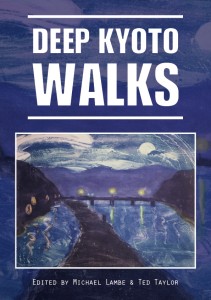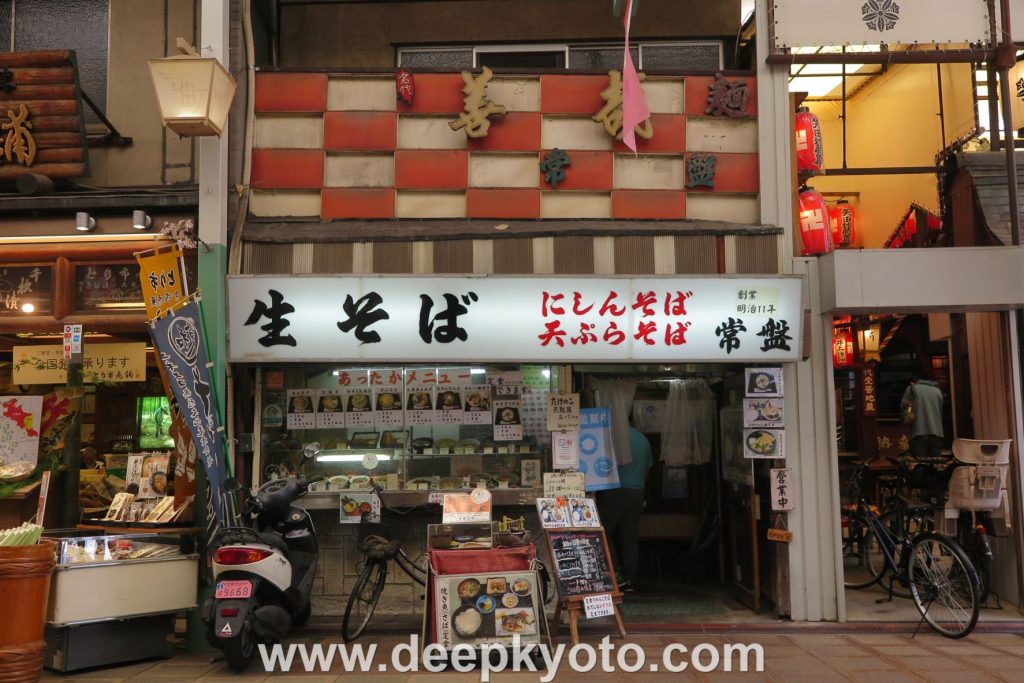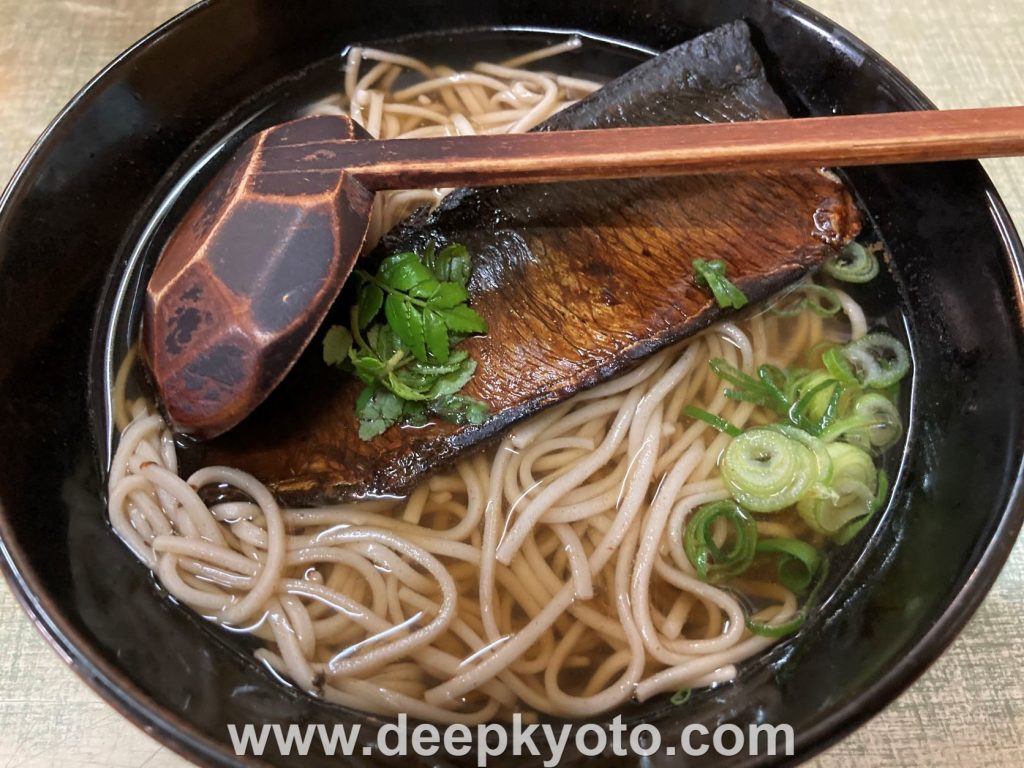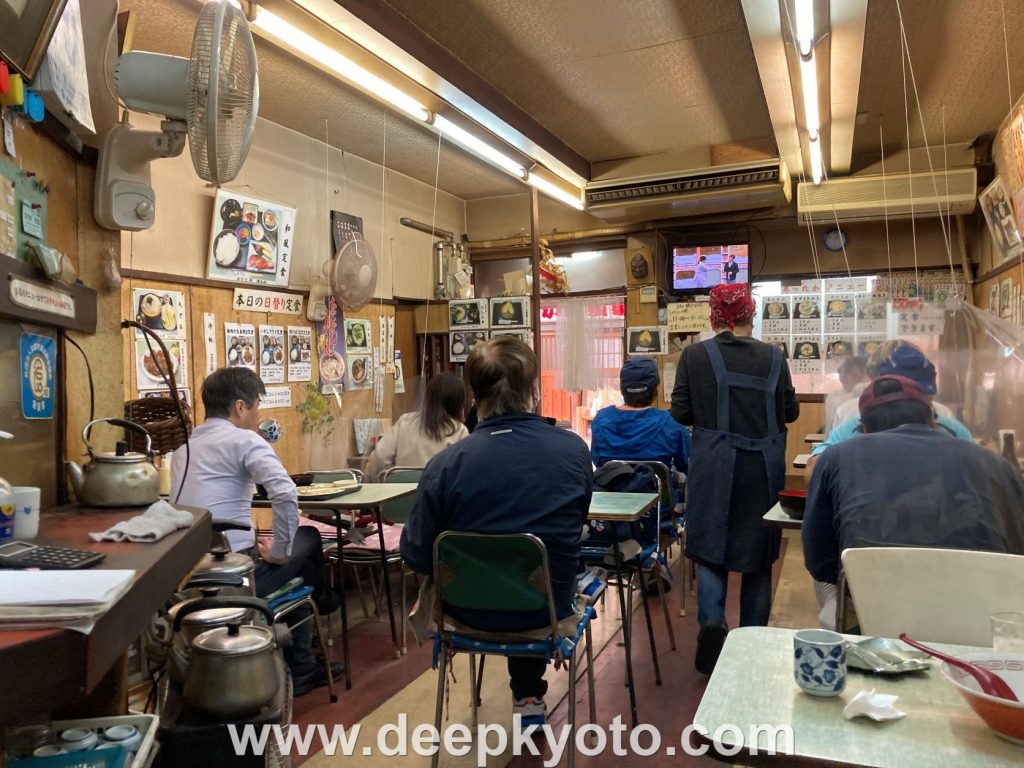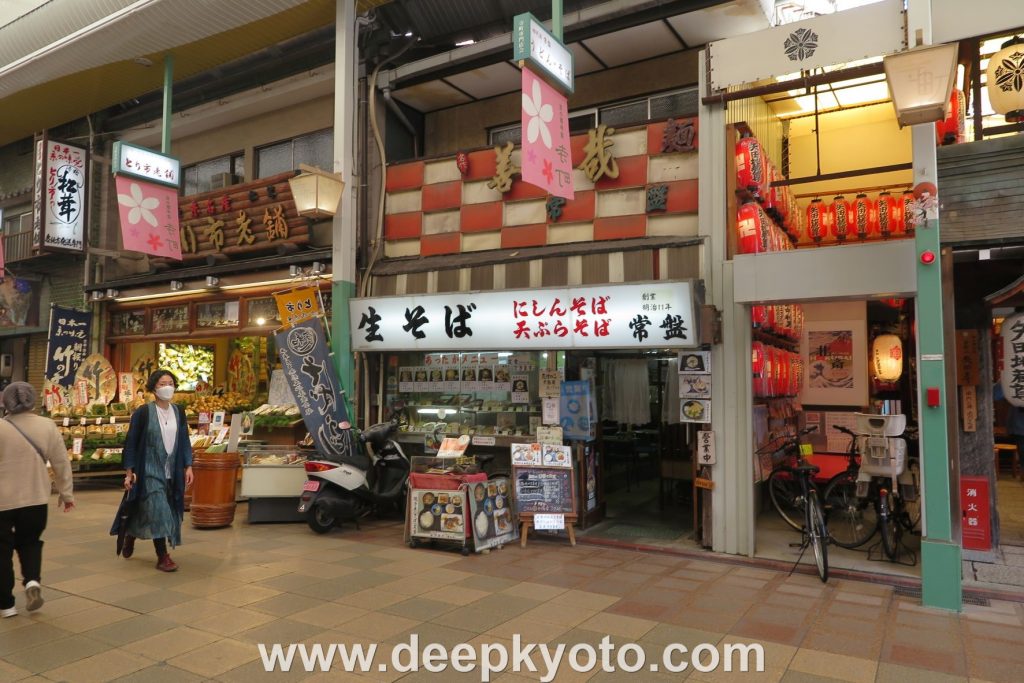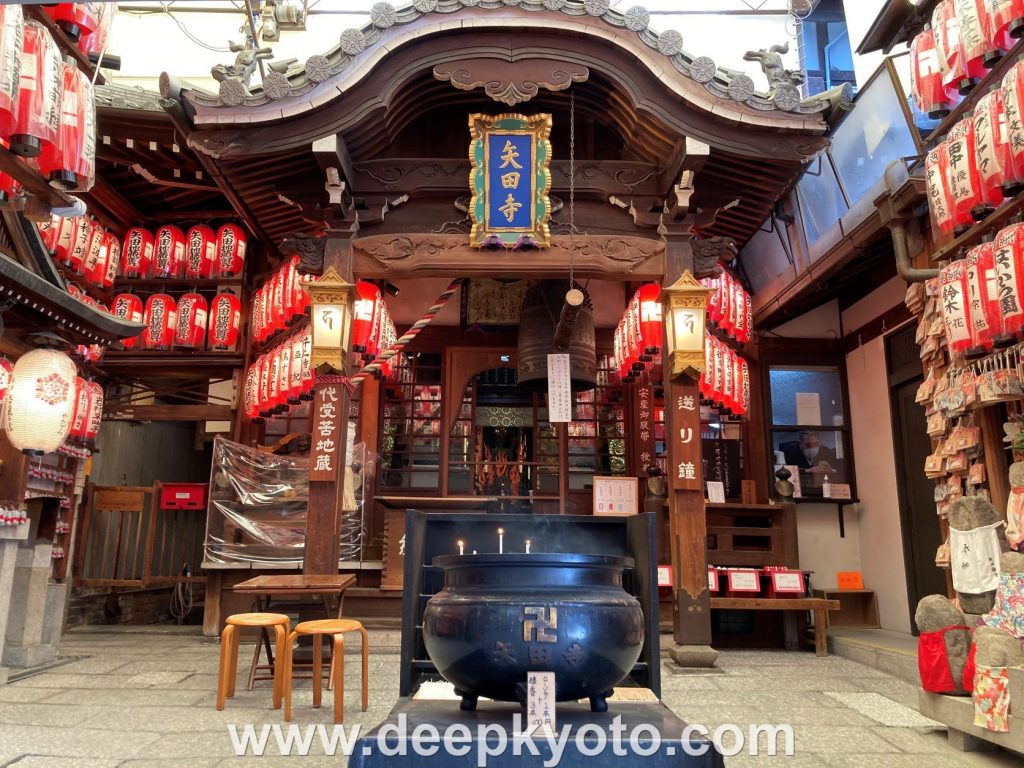日本語ã¯ã“ã¡ã‚‰
 If you’re in the Saga area, the cafe Saganoyu is a pleasant spot for lunch or a cup of coffee. Originally built as a public bathhouse in 1923, the building has been thoroughly renovated and was reopened as a cafe in 2006. You can still see the original tiling on the floors and the faucets along the walls.
If you’re in the Saga area, the cafe Saganoyu is a pleasant spot for lunch or a cup of coffee. Originally built as a public bathhouse in 1923, the building has been thoroughly renovated and was reopened as a cafe in 2006. You can still see the original tiling on the floors and the faucets along the walls.
Here’s what we had. Miu chose a cheese curry…

…which she washed down with an iced “Island milk tea” – so-named because it contains coconut milk.

And I had a peperoncino with anchovy and nanohana (rapeseed flowers) …

…with a refreshing framboise squash.

Everything was tasty and the service was good too. Saganoyu is not so cheap, but the Saga/Arashiyama area is rather touristy so cheap places are hard to find…
Saganoyu is located a short walk south of the JR Saga/Arashiyama Station. Here is a most convenient map. Check out the Saganoyu website more details and for their online shop: http://www.sagano-yu.com/
Open: 11.00 – 18.00 (Last orders: 17.30)
Telephone: 075-882-8985
This article first posted in March, 2014. Updated and reposted in August, 2023.
All text and images by Michael Lambe. All rights reserved.







 Dog Cafe is on
Dog Cafe is on 


















































 Salut Ya is super easy to get to from the Keihan Demachiyanagi Station. Take the number two exit and go east from the Family Mart on the corner of Imadegawa/Kawabata and Salut Ya is right there on your right. Here is a handy
Salut Ya is super easy to get to from the Keihan Demachiyanagi Station. Take the number two exit and go east from the Family Mart on the corner of Imadegawa/Kawabata and Salut Ya is right there on your right. Here is a handy 




